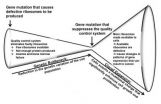(Press-News.org) A humble ingredient of bread – baker's yeast – has provided scientists with remarkable new insights into understanding basic processes likely involved in diseases such as Parkinson's and cancer.
In a new study published today (Monday March 31) in the prestigious journal PNAS (Proceedings of the National Academy of Science), the team from Germany, Leicester, and Portugal detail a new advance – describing for the first time a key feature in cellular development linked to the onset of these devastating diseases.
The research team is from the University Medical Center Goettingen, University of Leicester, and Instituto de Medicina Molecular, Lisbon, directed by long-time collaborators and senior authors Professor Tiago Outeiro and Dr Flaviano Giorgini.
Professor Outeiro, of the University Medical Center Goettingen, Goettingen and Instituto de Medicina Molecular, Lisbon, said: "This work shows how taking advantage of simple model organisms might help us speed up the discovery of more complex biological processes. Yeast cells are really excellent living test tubes, with a powerful toolbox that enabled us to learn about the underpinnings of complex human disorders."
Dr Giorgini, of the world-renowned Department of Genetics, at the University of Leicester, added: "We are tremendously excited by our results. The family of proteins under investigation have always been a bit of a "black box", and a true understanding of what these proteins do at a cellular level - and why they are important - has remained elusive. This work provides a step into this darkness."
The current research takes advantage of the simplicity and genetic power of the baker's yeast Saccharomyces cerevisiae to understand basic cellular processes underlying Parkinson's disease. The team studied a family of proteins in yeast (Hsp31, Hsp32, Hsp33, and Hsp34) which are related to a human protein known as DJ-1. Mutations in the human DJ-1 protein cause early-onset inherited forms of Parkinson's disease, and alterations in the human protein have been associated with more common forms of Parkinson's disease as well. In addition, changes in DJ-1 function are also associated with certain forms of cancer.
Claire Bale, Research Communications Manager at Parkinson's UK, commented: "This important research sheds new light on the root causes of Parkinson's.
"Although mutations in the DJ-1 gene cause rare inherited forms of the condition, we believe that understanding the role of this crucial protein and how it helps keep nerve cells healthy could be important for developing treatments that can help all people with Parkinson's. We look forward to hearing the results of future investigations in this emerging new area."
Professor Outeiro continued: "We reasoned that, by studying the yeast cousins of the human protein we would gain important insight into the function these proteins play, and understand why they may cause disease."
Dr Giorgini added: "Though the human protein DJ-1 has been linked to Parkinson's disease, its central cellular role is not well understood, and thus it is not clear why mutations in this protein cause this devastating disease. Our study sheds new light on what DJ-1 and related proteins are doing at a cellular level, and may thus ultimately have importance for better understanding Parkinson's."
The scientists discovered that the yeast versions of the human protein are important for maintenance of normal lifespan of the yeast cell and are involved in regulation of autophagy – a process which the cell employs to breakdown and recycle damaged cellular components. Lifespan and autophagy are central processes in the context of both Parkinson's disease and cancer. This work is critical because it provides a precise cellular role for DJ-1 family proteins, which links to some of the molecular functions previously ascribed to these proteins. This work could ultimately provide new insight into the mechanisms that contribute to Parkinson's and cancer.
Leonor Miller-Fleming, of the Instituto de Medicina Molecular, Lisbon and University of Leicester, said: "Our work is important because it suggests that human DJ-1 may function in a similar manner to the yeast version of this protein. We feel that similar studies should be performed with human DJ-1 in nerve cells, to clarify its function and to see if this contributes to the formation of Parkinson's disease. Ultimately, the detailed understanding of how these proteins function may enable us to come up with novel strategies to treat Parkinson's disease, cancer, and other related disorders."
The collaborators believe the next steps in the research are to better understand the details of how the DJ-1 family of proteins regulates autophagy, and if this applies in human neurons, particularly dopaminergic neurons, which are the nerve cells most sensitive to loss in the Parkinson's brain. Once the researchers build up on the findings they have now described, they will be in a better position to design novel strategies for therapeutic intervention.
Professor Outeiro explained: "This study highlights the importance of international collaborations and networks, in which different strengths are combined to yield novel insights into science. Importantly, this scientific collaboration is also based upon personal friendship between the two senior authors, which makes science ever more exciting and fun."
Dr Giorgini added: "In addition, this work was primarily spearheaded by a single PhD student – Leonor Miller-Fleming – who drove the project forward with passion and creativity, showing the importance of promoting, supporting and funding doctoral research."
Professor Outeiro said: "We were pioneers in the development of the first model of Parkinson's disease in yeast cells. With this work, we explored the powerful toolbox of yeast cells to learn about DJ-1 proteins, also intimately linked to Parkinson's disease. We are basically adding pieces to this complicated puzzle, and getting one step closer to understanding the origin of this disorder."
INFORMATION:
The work was funded by Parkinson's UK; Fundação para a Ciência e Tecnologia (FCT), Portugal and DFG Center for Nanoscale Microscopy and Molecular Physiology of the Brain, Germany.
Using your loaf to fight brain disease
Experts analyze baker's yeast to discover potential for combatting neurological conditions like Parkinson's and even cancer
2014-03-31
ELSE PRESS RELEASES FROM THIS DATE:
Can antibiotics cause autoimmunity?
2014-03-31
(PHILADELPHIA) -- The code for every gene includes a message at the end of it that signals the translation machinery to stop. Some diseases, such as cystic fibrosis and Duchenne muscular dystrophy, can result from mutations that insert this stop signal into the middle of an essential gene, causing the resulting protein to be truncated. Some antibiotics cause the cell's translation machinery to ignore the stop codons and are therefore being explored as a potential therapy for these diseases. But new research reported online in Proceedings of the National Academy of Sciences ...
Self-healing engineered muscle grown in the laboratory
2014-03-31
VIDEO:
After veins grow into the implanted engineered muscle fibers, blood cells can be seen traveling through them, sustaining and nourishing the new tissue.
Click here for more information.
DURHAM, N.C. -- Biomedical engineers have grown living skeletal muscle that looks a lot like the real thing. It contracts powerfully and rapidly, integrates into mice quickly, and for the first time, demonstrates the ability to heal itself both inside the laboratory and inside an animal.
The ...
Ancient whodunit may be solved: The microbes did it!
2014-03-31
Evidence left at the crime scene is abundant and global: Fossil remains show that sometime around 252 million years ago, about 90 percent of all species on Earth were suddenly wiped out — by far the largest of this planet's five known mass extinctions. But pinpointing the culprit has been difficult, and controversial.
Now, a team of MIT researchers may have found enough evidence to convict the guilty parties — but you'll need a microscope to see the killers.
The perpetrators, this new work suggests, were not asteroids, volcanoes, or raging coal fires, all of which have ...
Experimental cancer drug reverses schizophrenia in adolescent mice
2014-03-31
Johns Hopkins researchers say that an experimental anticancer compound appears to have reversed behaviors associated with schizophrenia and restored some lost brain cell function in adolescent mice with a rodent version of the devastating mental illness.
The drug is one of a class of compounds known as PAK inhibitors, which have been shown in animal experiments to confer some protection from brain damage due to Fragile X syndrome, an inherited disease in humans marked by mental retardation. There also is some evidence, experts say, suggesting PAK inhibitors could be used ...
Possible explanation for human diseases caused by defective ribosomes
2014-03-31
Ribosomes are essential for life, generating all of the proteins required for cells to grow. Mutations in some of the proteins that make ribosomes cause disorders characterized by bone marrow failure and anemia early in life, followed by elevated cancer risk in middle age. These disorders are generally called "ribosomopathies."
How can ribosomopathies first appear as diseases caused by too few cells, but later turn into diseases caused by too many cells? This paradox has puzzled the scientific community for years. A new study, which uses a genetic approach to examine ...
Oxygen depletion in the Baltic Sea is 10 times worse than a century ago
2014-03-31
This news release is available in German. After several years of discussions, researchers from Aarhus University (Denmark), Lund University (Sweden) and Stockholm University (Sweden) have determined that nutrients from the land are the main cause of widespread areas of oxygen depletion. The results were published on 31 March in the prestigious American journal Proceedings of the National Academy of Sciences.
Nutrients are the villain
The deepest areas of the Baltic Sea have always had a low oxygen content. The inflow of fresh water is actually limited by low thresholds ...
Scientists understand how E. coli clone has become globally distributed
2014-03-31
Scientists have for the first time come closer to understanding how a clone of E. coli, described as the most important of its kind to cause human infections, has spread across the world in a very short time.
E. coli clone ST131 is one of the leading causes of urinary tract and blood stream infections and has crossed the globe at a rapid rate. Worryingly, members of this clone are becoming more resistant to antibiotics. As an indication of scale, more than half of all women will suffer a urinary tract infection at least once in their lives. An international team of scientists, ...
Researchers announce first phononic crystal that can be altered in real time
2014-03-31
Using an acoustic metadevice that can influence the acoustic space and can control any of the ways in which waves travel, engineers have demonstrated, for the first time, that it is possible to dynamically alter the geometry of a three-dimensional colloidal crystal in real time.
The colloidal crystals designed in the study, called metamaterials, are artificially structured materials that extend the properties of existing naturally occurring materials and compounds. The research by academics from the University of Bristol's Department of Mechanical Engineering is published ...
Weaker gut instinct makes teens open to risky behavior
2014-03-31
DURHAM, N.C. -- Making a snap decision usually means following your initial reaction -- going with your gut. That intuitive feeling sprouts from the limbic system, the evolutionarily older and simpler part of the brain that affects emotion, behavior and motivation.
But during adolescence, the limbic system connects and communicates with the rest of the brain differently than it does during adulthood, leaving many adolescents vulnerable to riskier behaviors, according to Duke University researchers.
"We know adolescence is a time of profound social change. It's also ...
New tool helps young adults with sickle cell disease in the transition to adult care
2014-03-31
(Boston) – Child and adolescent hematologists at Boston Medical Center (BMC) have developed a tool to gauge how ready young adults with sickle cell disease are for a transition into adult care. In a new article for the Journal of Pediatric Hematology/Oncology, Amy Sobota, MD, MPH, and her collaborators have shown that a questionnaire geared to the needs of young adults with sickle cell disease can pinpoint areas of need before the patient goes into an adult clinic.
BMC's sickle cell disease transition clinic, which is unique in Boston, was established in 2008 and serves ...
LAST 30 PRESS RELEASES:
Tracing the quick synthesis of an industrially important catalyst
New software sheds light on cancer’s hidden genetic networks
UT Health San Antonio awarded $3 million in CPRIT grants to bolster cancer research and prevention efforts in South Texas
Third symposium spotlights global challenge of new contaminants in China’s fight against pollution
From straw to soil harmony: International team reveals how biochar supercharges carbon-smart farming
Myeloma: How AI is redrawing the map of cancer care
Manhattan E. Charurat, Ph.D., MHS invested as the Homer and Martha Gudelsky Distinguished Professor in Medicine at the University of Maryland School of Medicine
Insilico Medicine’s Pharma.AI Q4 Winter Launch Recap: Revolutionizing drug discovery with cutting-edge AI innovations, accelerating the path to pharmaceutical superintelligence
Nanoplastics have diet-dependent impacts on digestive system health
Brain neuron death occurs throughout life and increases with age, a natural human protein drug may halt neuron death in Alzheimer’s disease
SPIE and CLP announce the recipients of the 2025 Advanced Photonics Young Innovator Award
Lessons from the Caldor Fire’s Christmas Valley ‘Miracle’
Ant societies rose by trading individual protection for collective power
Research reveals how ancient viral DNA shapes early embryonic development
A molecular gatekeeper that controls protein synthesis
New ‘cloaking device’ concept to shield sensitive tech from magnetic fields
Researchers show impact of mountain building and climate change on alpine biodiversity
Study models the transition from Neanderthals to modern humans in Europe
University of Phoenix College of Doctoral Studies releases white paper on AI-driven skilling to reduce burnout and restore worker autonomy
AIs fail at the game of visual “telephone”
The levers for a sustainable food system
Potential changes in US homelessness by ending federal support for housing first programs
Vulnerability of large language models to prompt injection when providing medical advice
Researchers develop new system for high-energy-density, long-life, multi-electron transfer bromine-based flow batteries
Ending federal support for housing first programs could increase U.S. homelessness by 5% in one year, new JAMA study finds
New research uncovers molecular ‘safety switch’ shielding cancers from immune attack
Bacteria resisting viral infection can still sink carbon to ocean floor
Younger biological age may increase depression risk in older women during COVID-19
Bharat Innovates 2026 National Basecamp Showcases India’s Most Promising Deep-Tech Ventures
Here’s what determines whether your income level rises or falls
[Press-News.org] Using your loaf to fight brain diseaseExperts analyze baker's yeast to discover potential for combatting neurological conditions like Parkinson's and even cancer






